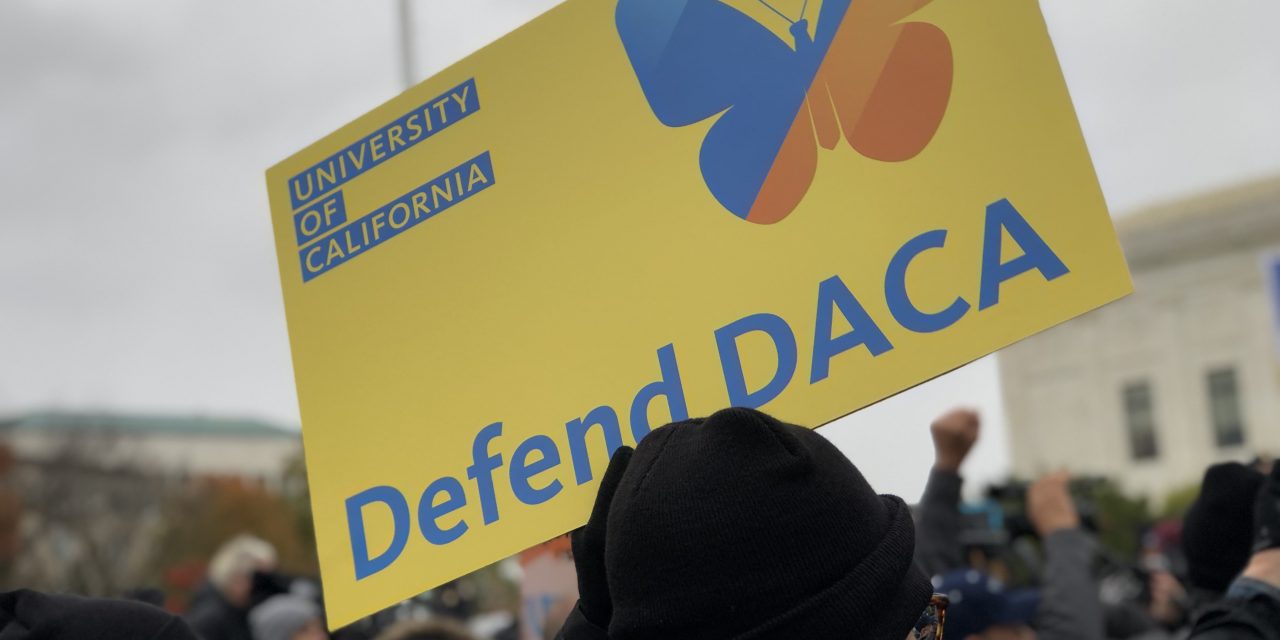A federal judge in New York has overturned the Trump administration’s latest effort to limit the Deferred Action for Childhood Arrivals (DACA) initiative.
DACA temporarily protects certain people without immigration status from deportation and provides them with a work permit. The Trump administration’s previous effort to end the initiative altogether was rejected by the U.S. Supreme Court. DHS responded by attempting to severely limit participation in the initiative, which the court in New York rejected. The latest decision means that starting December 7, hundreds of thousands of people should be able to apply for DACA for the first time.
History of DACA
In 2012, after years of pressure from immigrant youth, the Obama administration implemented DACA through executive action. Applicants must meet certain age, physical presence, and academic requirements to qualify, in addition to passing a criminal background check.
In 2017, the Trump administration attempted to terminate DACA, claiming it was illegal. Lawsuits forced the government to continue granting renewals from people already enrolled, but the administration was allowed to refuse any new applications.
In June 2020, the Supreme Court found that the Department of Homeland Security (DHS) did not adequately explain its decision to end DACA and its reasoning to do so was faulty. However, the Court left the door open to the Trump administration ending DACA so long as it did so properly.
Following that decision, U.S. Citizenship and Immigration Services (USCIS) should have—but did not—start accepting first-time applications after the Supreme Court decision. In July, DHS instead issued a memo severely limiting DACA. The memo excluded first-time applicants, required renewal annually instead of every two years, and eliminated most advanced parole, a procedure that let DACA recipients travel outside of the country.
Recent Federal Court Decision
Judge Nicholas Garaufis’ December 4 court order states that DHS’ July memo is void because Acting Secretary of Homeland Security Chad Wolf signed it without having the authority to do so.
Judge Garaufis had previously ruled that Acting Secretary Wolf was improperly serving at DHS because the administration did not follow succession laws. Another federal judge and the Government Accountability Office have come to similar conclusions.
Judge Garaufis’ decision requires that DACA be returned to its original 2012 form. Recently granted 1-year renewals will be automatically extended an additional year. USCIS’ website must be updated with application instructions by December 7.
Future of DACA
The lives of hundreds of thousands of people are affected by these back-and-forth court decisions. Over 645,000 people were enrolled in DACA as of June 2020. Another 685,000 were eligible, including many who have aged into eligibility in the time USCIS has not been accepting new applications.
While the recent court decision is good news, DACA is still in danger.
The next hearing in a separate lawsuit against the initiative is scheduled for December 22 in a federal court in Texas. The case, filed by 10 state attorneys general, argues that DACA is illegal, and that it burdens state healthcare and education.
The Biden administration has committed to reinstating DACA in 2021 if it is still blocked, an action supported by most Americans. However, if the Texas lawsuit or another legal challenge determines the initiative to be illegal, the administration’s options will be far more limited.
Even if DACA survives, it is not a permanent solution.
The initiative provides temporary relief from deportation but no permanent immigration status, leaving its recipients in constant uncertainty. The program also leaves out millions of other undocumented people living in the United States.
In addition to ending DACA, the Biden administration should use executive authority such as Parole in Place and Temporary Protected Status or Deferred Enforced Departure to prevent unnecessary deportations in the short term. However, legislation with a path to citizenship will be necessary for any long-term solutions.
FILED UNDER: Department of Homeland Security, Donald Trump, USCIS


